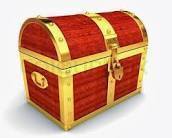Lebanon

Country ISO code: LB
Official language: Arabic
Language ISO code: ar
Current official currency: Lebanese Pound
Current currency ISO code: LBP
Complete Financial History of Lebanon (الجمهورية اللبنانية)
Current official currency: Lebanese Pound (ليرة لبنانية)
-
ISO code: LBP
-
Symbols: ل.ل. (Arabic), £ (informal)
-
Singular name: ليرة (lira)
-
Plural name: ليرات (lirat)
-
Monetary subdivision: Originally divided into 100 piastras (قرش, qirsh)
-
Fraction singular name: قرش (qirsh)
-
Fraction plural name: varies with number, including قرشان (qirshān), قروش (qurush), قرشا (qirshan), قرش (qirshi)
-
Initial production date: 1924
-
Final production date: Still in production
-
Initial circulation date: 1924
-
Final circulation date: Still in circulation
-
Mint: Not specifically documented; coins produced locally or by contracted mints
-
Issuing bank: Banque du Liban (Bank of Lebanon), established 1964
Current coin denominations
-
25 LBP (nickel-plated steel)
-
50 LBP (stainless steel)
-
100 LBP (brass-plated copper or stainless steel in later issues)
-
250 LBP (aluminum-nickel-bronze)
-
500 LBP (nickel-plated steel)
Current banknote denominations
-
1,000 LBP
-
5,000 LBP
-
10,000 LBP
-
20,000 LBP
-
50,000 LBP
-
100,000 LBP
Economic and historical context
-
Pre-WWI: Ottoman lira used
-
1918: Egyptian pound circulated after Ottoman Empire collapse
-
1920: Syrian pound introduced under French mandate, pegged to French franc (1 pound = 20 francs)
-
1939: Lebanese pound separated officially from Syrian pound, still pegged to French franc
-
WWII: Pegged to British pound sterling (8.83 LBP = 1 GBP)
-
Post-WWII: Peg restored to French franc, abandoned in 1949
-
Pre-civil war: ~3 LBP per USD
-
Civil war (1975-1990): Hyperinflation, currency devaluation to over 2,500 LBP/USD by 1992
-
1997: Fixed official rate at 1,507.5 LBP/USD established
-
Since 2019: Official peg abandoned in practice, black market rates exceed 9,000 LBP/USD due to economic crisis
-
Currency issuance increased by 266% (2019-2021), worsening liquidity crisis
-
Severe financial crisis ongoing with debt default and high inflation
Minting and production locations
-
Specific mint locations not publicly documented; coins produced locally or outsourced
Designs and symbols on coins and banknotes
-
Coins feature Arabic and French denominations, national motifs and traditional symbols
-
Banknotes bilingual (Arabic and French), depicting historical figures, architecture, and national symbols
Production volumes, honorees, and seals
-
Detailed production numbers and seals not publicly available
-
Banknotes and coins commemorate Lebanese historical and cultural figures
Commemorative coins and curiosities
-
Occasional commemorative issues exist, details limited
Current circulation status
-
Lebanese Pound remains the official and actively circulating currency despite parallel market fluctuations
Issuing authority
-
Banque du Liban (Bank of Lebanon), sole monetary authority since 1964
Relevant monetary legislation
-
Currency and Credit Code enacted April 1, 1964, establishing Banque du Liban and its exclusive issuance rights
Signatories on banknotes
-
Banknotes bear signatures of Banque du Liban governors, varying by issuance period
Notable individuals featured on currency
-
Includes prominent Lebanese leaders, poets, and national icons; detailed list not publicly available
This report summarizes the full financial history of Lebanon’s currency, emphasizing the Lebanese Pound (LBP) as the current official currency, its subdivisions, denominations, historical context, and current economic status.
 Nilton Romani
Nilton Romani
